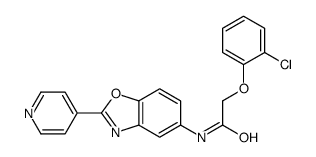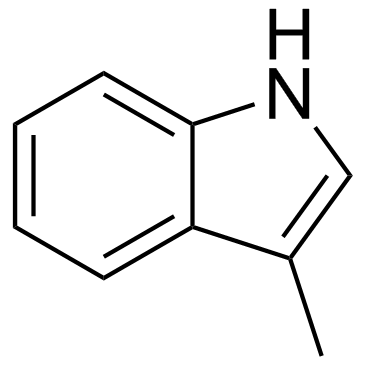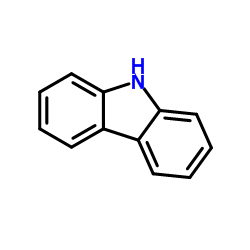6101-04-8
| Name | 2-(2-chlorophenoxy)-N-(2-pyridin-4-yl-1,3-benzoxazol-5-yl)acetamide |
|---|---|
| Synonyms |
Strychnin,Hydrochlorid
strychnine,hydrochloride 2-(2-chlorophenoxy)-N-[2-(pyridin-4-yl)-1,3-benzoxazol-5-yl]acetamide |
| Density | 1.398g/cm3 |
|---|---|
| Boiling Point | 626.4ºC at 760 mmHg |
| Molecular Formula | C20H14ClN3O3 |
| Molecular Weight | 379.79600 |
| Flash Point | 332.6ºC |
| Exact Mass | 379.07200 |
| PSA | 80.74000 |
| LogP | 5.21020 |
| Index of Refraction | 1.679 |
|
Section 1. Chemical Product and Company Identification Strychnine HCl dihydrateCatalog ST145 Common Name/ Number(s). Trade Name CAS#6101-04-8
Manufacturer RTECSWL2430000 SPECTRUM QUALITY PRODUCTS INC. TSCATSCA 8(b) inventory: Strychnine HCl dihydrate Commercial Name(s)Not available. CI# Not available. SynonymStrychnidin-10-one hydrochloride IN CASE OF EMERGENCY Strychnine Hydrochloride Chemical Name Chemical FamilyNot available.CALL (310) 516-8000 (C21H22N2O2)2.HCl.2H2O Chemical Formula SPECTRUM QUALITY PRODUCTS INC. Section 2.Composition and Information on Ingredients Exposure Limits TWA (mg/m3)STEL (mg/m3) CEIL (mg/m3) NameCAS #% by Weight 1) Strychnine HCl dihydrate6101-04-8100 Toxicological DataStrychnine HCl dihydrate: on IngredientsORAL (LD50):Acute: 2 mg/kg [Rat]. Section 3. Hazards Identification Potential Acute Health Effects Extremely hazardous in case of inhalation. Very hazardous in case of eye contact (irritant), of ingestion. Hazardous in case of skin contact (irritant). Severe over-exposure can result in death. Inflammation of the eye is characterized by redness, watering, and itching. Potential Chronic HealthCARCINOGENIC EFFECTS: Not available. EffectsMUTAGENIC EFFECTS: Not available. TERATOGENIC EFFECTS: Not available. DEVELOPMENTAL TOXICITY: Not available. The substance is toxic to the nervous system. The substance may be toxic to heart, central nervous system (CNS). Repeated or prolonged exposure to the substance can produce target organs damage. Repeated exposure to a highly toxic material may produce general deterioration of health by an accumulation in one or many human organs. Strychnine HCl dihydrate Section 4. First Aid Measures Eye ContactCheck for and remove any contact lenses. In case of contact, immediately flush eyes with plenty of water for at least 15 minutes. Cold water may be used. Get medical attention immediately. Skin ContactIn case of contact, immediately flush skin with plenty of water. Cover the irritated skin with an emollient. Remove contaminated clothing and shoes. Cold water may be used.Wash clothing before reuse. Thoroughly clean shoes before reuse. Get medical attention. Serious Skin ContactWash with a disinfectant soap and cover the contaminated skin with an anti-bacterial cream. Seek immediate medical attention. InhalationIf inhaled, remove to fresh air. If not breathing, give artificial respiration. If breathing is difficult, give oxygen. Get medical attention. Serious InhalationEvacuate the victim to a safe area as soon as possible. Loosen tight clothing such as a collar, tie, belt or waistband. If breathing is difficult, administer oxygen. If the victim is not breathing, perform mouth-to-mouth resuscitation. Seek medical attention. IngestionIf swallowed, do not induce vomiting unless directed to do so by medical personnel. Never give anything by mouth to an unconscious person. Loosen tight clothing such as a collar, tie, belt or waistband. Get medical attention immediately. Serious IngestionNot available. Section 5. Fire and Explosion Data Flammability of the Product May be combustible at high temperature. Auto-Ignition Temperature Not available. Flash PointsNot available. Flammable LimitsNot available. Products of CombustionThese products are carbon oxides (CO, CO2), nitrogen oxides (NO, NO2...), halogenated compounds. Fire Hazards in Presence of Not available. Various Substances Explosion Hazards in Presence Risks of explosion of the product in presence of mechanical impact: Not available. Risks of explosion of the product in presence of static discharge: Not available. of Various Substances SMALL FIRE: Use DRY chemical powder. Fire Fighting Media and InstructionsLARGE FIRE: Use water spray, fog or foam. Do not use water jet. Special Remarks onNot available. Fire Hazards Special Remarks on Explosion Not available. Hazards Section 6. Accidental Release Measures Small SpillUse appropriate tools to put the spilled solid in a convenient waste disposal container. Large Spill Poisonous solid. Stop leak if without risk. Do not get water inside container. Do not touch spilled material. Use water spray to reduce vapors. Prevent entry into sewers, basements or confined areas; dike if needed. Eliminate all ignition Strychnine HCl dihydrate Section 7. Handling and Storage PrecautionsKeep locked up.. Keep away from heat. Keep away from sources of ignition. Empty containers pose a fire risk, evaporate the residue under a fume hood. Ground all equipment containing material. Do not ingest. Do not breathe dust. In case of insufficient ventilation, wear suitable respiratory equipment. If ingested, seek medical advice immediately and show the container or the label. Avoid contact with skin and eyes. StorageKeep container tightly closed. Keep container in a cool, well-ventilated area. Section 8. Exposure Controls/Personal Protection Engineering ControlsUse process enclosures, local exhaust ventilation, or other engineering controls to keep airborne levels below recommended exposure limits. If user operations generate dust, fume or mist, use ventilation to keep exposure to airborne contaminants below the exposure limit. Personal ProtectionSplash goggles. Lab coat. Dust respirator. Be sure to use an approved/certified respirator or equivalent. Gloves. Personal Protection in Case of Splash goggles. Full suit. Dust respirator. Boots. Gloves. A self contained breathing apparatus should be used a Large Spillto avoid inhalation of the product. Suggested protective clothing might not be sufficient; consult a specialist BEFORE handling this product. Exposure LimitsNot available. Section 9. Physical and Chemical Properties Physical state and appearance Solid. (Powdered solid.)OdorOdorless. Bitter. Taste Molecular Weight406.9 g/mole White. Color Not available. pH (1% soln/water) Boiling PointNot available. Melting PointDecomposes. Critical TemperatureNot available. Specific GravityNot available. Not applicable. Vapor Pressure Vapor DensityNot available. Not available. Volatility Odor ThresholdNot available. Water/Oil Dist. Coeff.Not available. Ionicity (in Water)Not available. Dispersion PropertiesSee solubility in water. SolubilityPartially soluble in cold water. Section 10. Stability and Reactivity Data StabilityThe product is stable. Instability TemperatureNot available. Conditions of InstabilityNot available. Incompatibility with variousNot available. substances CorrosivityNon-corrosive in presence of glass. Strychnine HCl dihydrate Special Remarks onNot available. Reactivity Special Remarks onNot available. Corrosivity PolymerizationWill not occur. Section 11. Toxicological Information Routes of EntryAbsorbed through skin. Eye contact. Inhalation. Ingestion. Toxicity to AnimalsAcute oral toxicity (LD50): 2 mg/kg [Rat]. Chronic Effects on HumansCauses damage to the following organs: the nervous system. May cause damage to the following organs: heart, central nervous system (CNS). Other Toxic Effects onExtremely hazardous in case of inhalation. HumansVery hazardous in case of ingestion. Hazardous in case of skin contact (irritant). Special Remarks onNot available. Toxicity to Animals Special Remarks onNot available. Chronic Effects on Humans Special Remarks on otherNot available. Toxic Effects on Humans Section 12. Ecological Information EcotoxicityNot available. Not available. BOD5 and COD Possibly hazardous short term degradation products are not likely. However, long term degradation products may Products of Biodegradation arise. Toxicity of the ProductsThe products of degradation are less toxic. of Biodegradation Special Remarks on theNot available. Products of Biodegradation Section 13. Disposal Considerations Waste Disposal Section 14. Transport Information DOT ClassificationCLASS 6.1: Poisonous material. Identification: Strychnine salt (Strychnine hydrochloride) UNNA: 1692 PG: I Marine Pollutant Special Provisions for Transport Strychnine HCl dihydrate DOT (Pictograms) Section 15. Other Regulatory Information and Pictograms TSCA 8(b) inventory: Strychnine HCl dihydrate Federal and State SARA 302/304/311/312 extremely hazardous substances: Strychnine HCl dihydrate Regulations California Proposition 65 Warnings Other RegulationsOSHA: Hazardous by definition of Hazard Communication Standard (29 CFR 1910.1200). CLASS D-1A: Material causing immediate and serious toxic effects (VERY TOXIC). Other ClassificationsWHMIS (Canada) CLASS D-2B: Material causing other toxic effects (TOXIC). DSCL (EEC)R28- Very toxic if swallowed. R38- Irritating to skin. R41- Risk of serious damage to eyes. Health Hazard HMIS (U.S.A.)3 National Fire Protection 1 Flammability 1 Association (U.S.A.) Fire Hazard 3 0 Reactivity Health Reactivity 0 Specific hazard Personal Protection E WHMIS (Canada) (Pictograms) DSCL (Europe) (Pictograms) TDG (Canada) (Pictograms) ADR (Europe) (Pictograms) Protective Equipment Gloves. Lab coat. Strychnine HCl dihydrate Dust respirator. Be sure to use an approved/certified respirator or equivalent. Wear appropriate respirator when ventilation is inadequate. SECTION 16 - ADDITIONAL INFORMATION N/A |



